3 October 2016
A virtual field trip to Rathlin Island, Northern Ireland
Posted by Callan Bentley
Rathlin Island lies north of mainland Northern Ireland, a few miles offshore. I spent three lovely days there this past summer, investigating the geology and appreciating the wildlife (puffins and other sea birds, and seals). The geology is pretty straightforward: Paleogene basalt overlying Cretaceous “chalk” (really not so chalky here – technically, it’s the Ulster White Limestone). Here’s a suite of interactive imagery that you can use to explore Rathlin’s geology in a “virtual field trip.”
Google Maps view of the island:
A photo to show the basalt overlying the chalk:
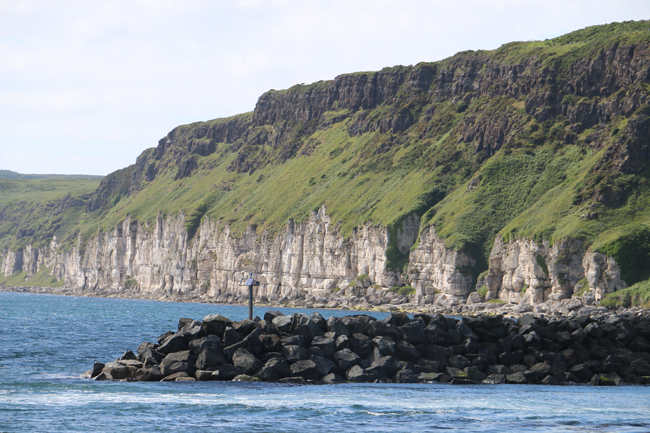
In places the chalk is rich in chert nodules:
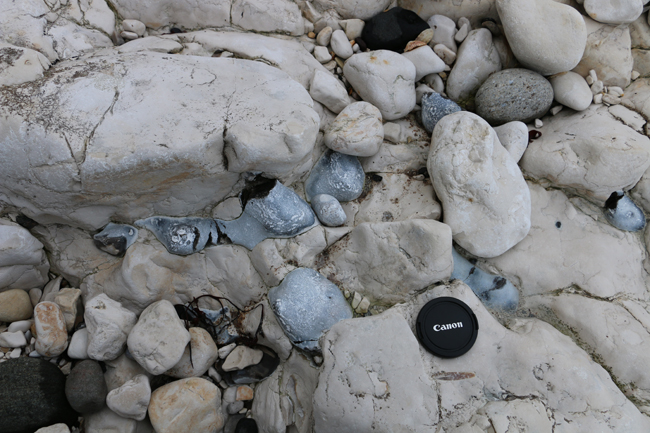
The chalk contains beautiful belemnite fossils:
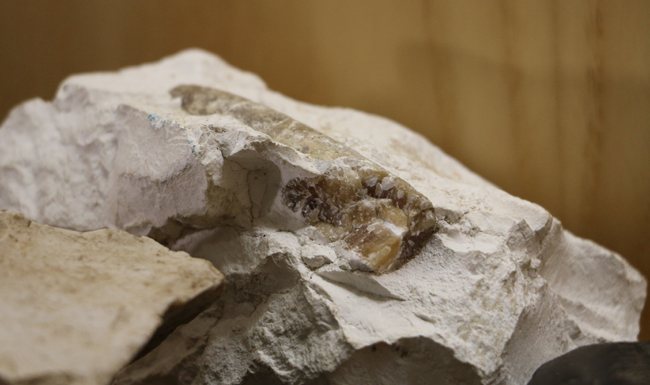
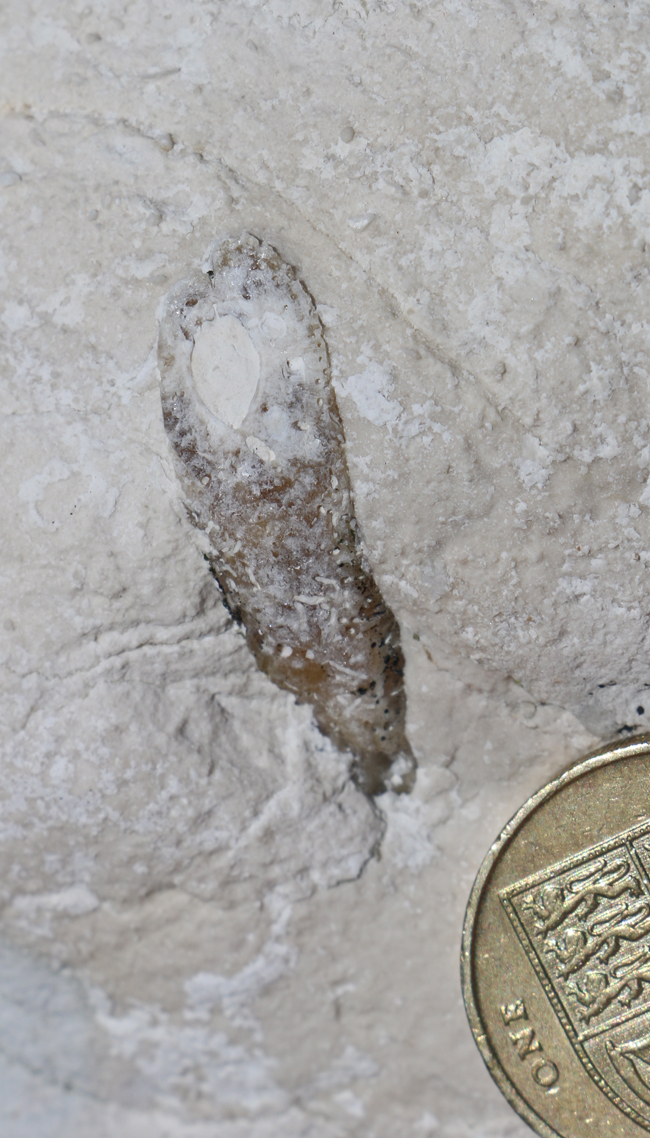
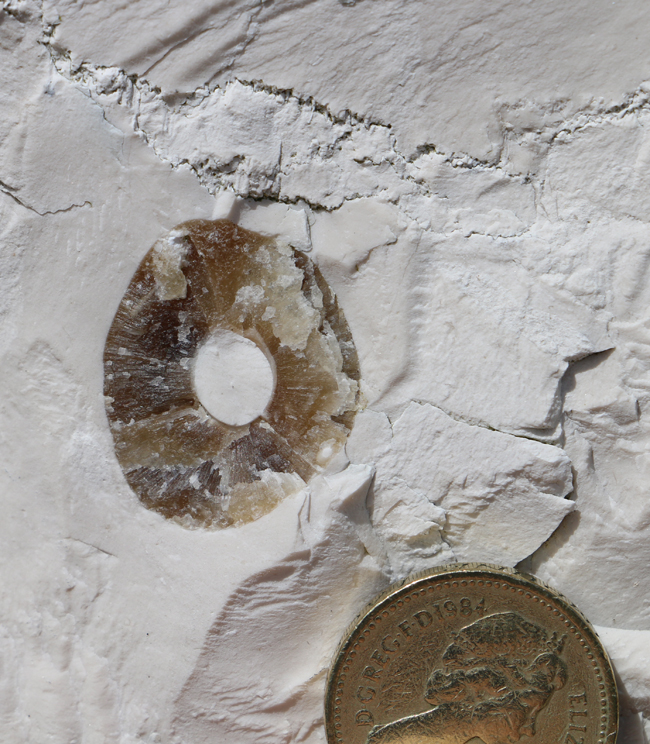
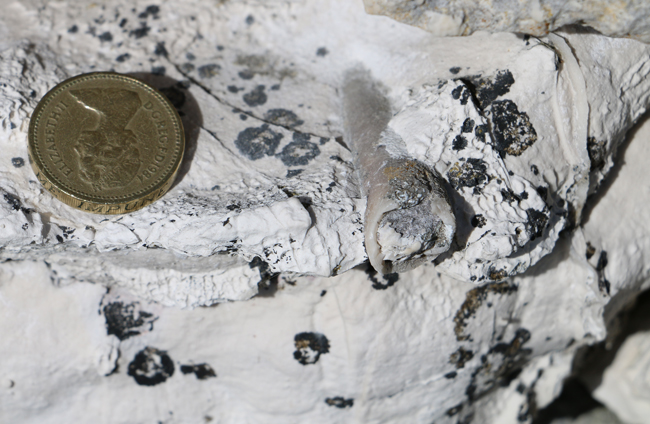
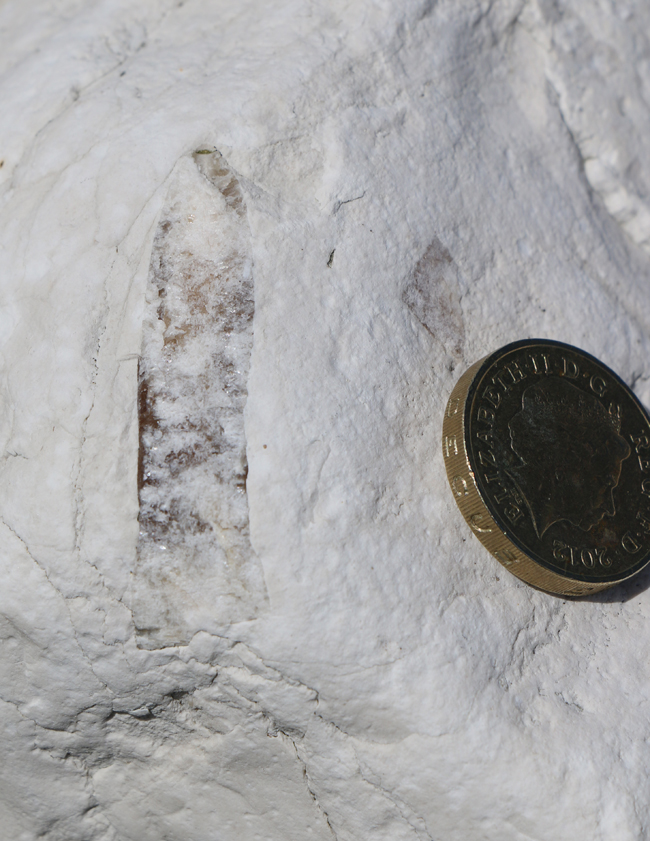
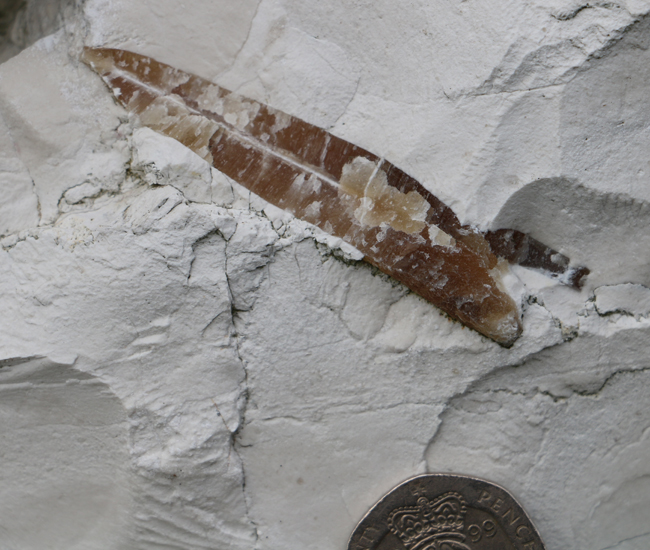
Here’s another fossil of some sort. Anyone able to identify it?
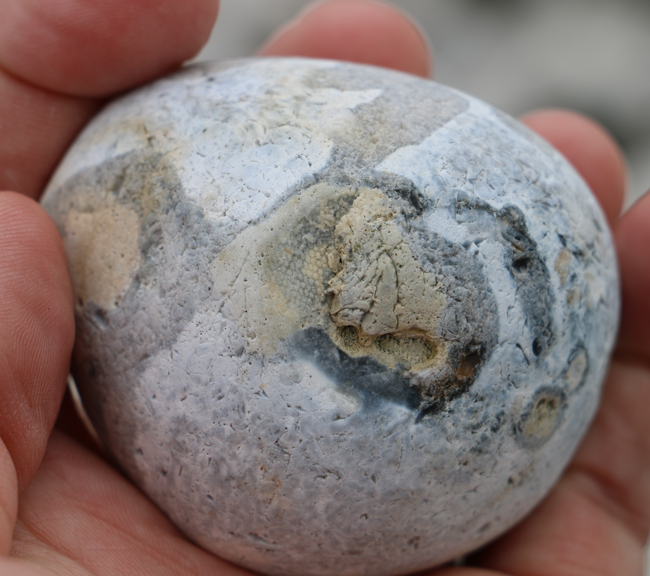
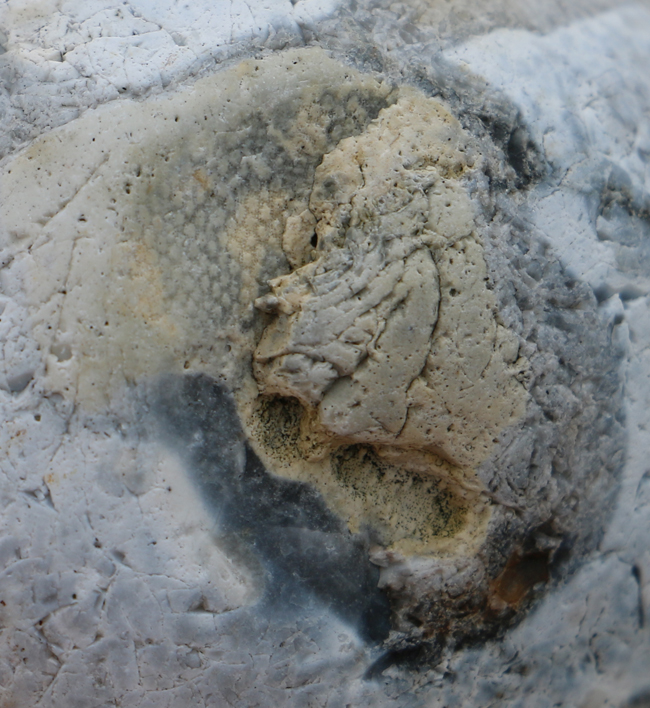
Lithophagus clams bore holes into the chalk, and dwell therein:
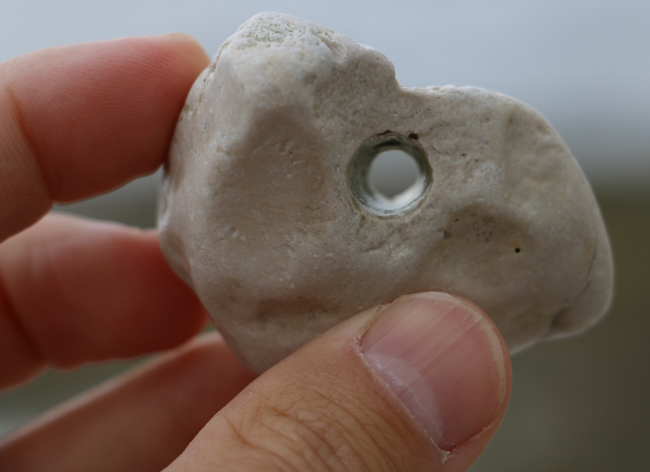
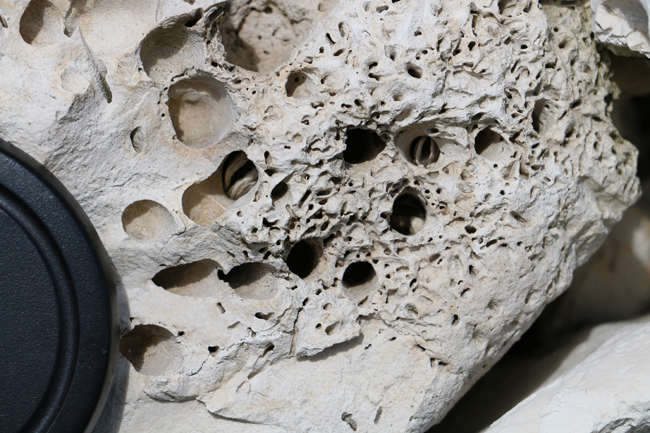
These are modern critters, occupying a Cretaceous substrate. They are not fossils.
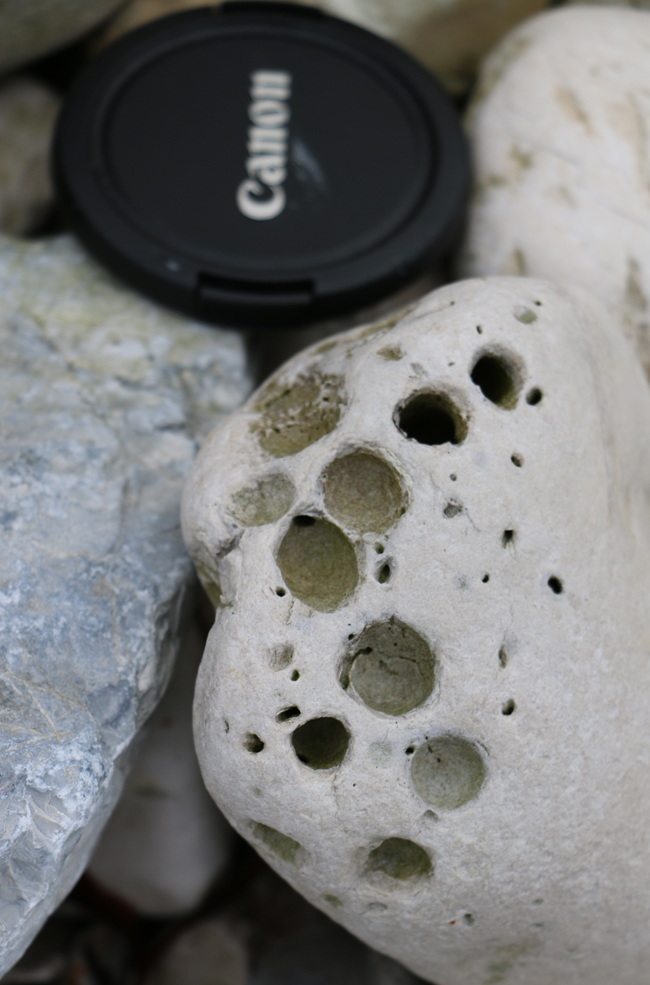
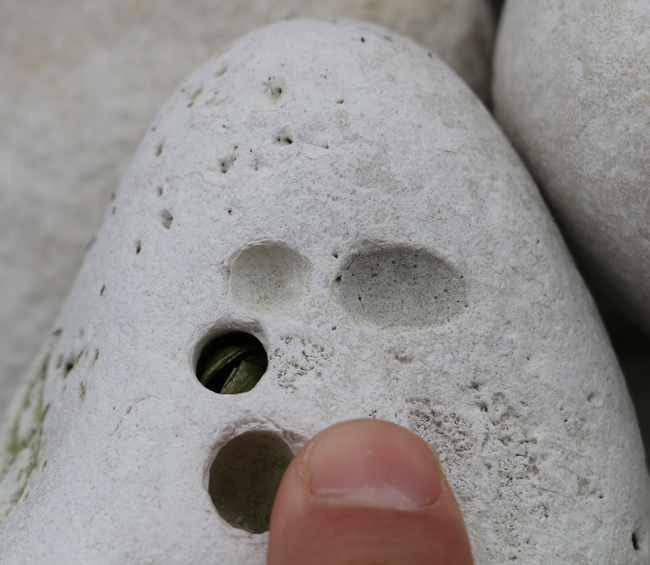
On the west side of the island, sea stacks provide nesting places for a LOT of seabirds:
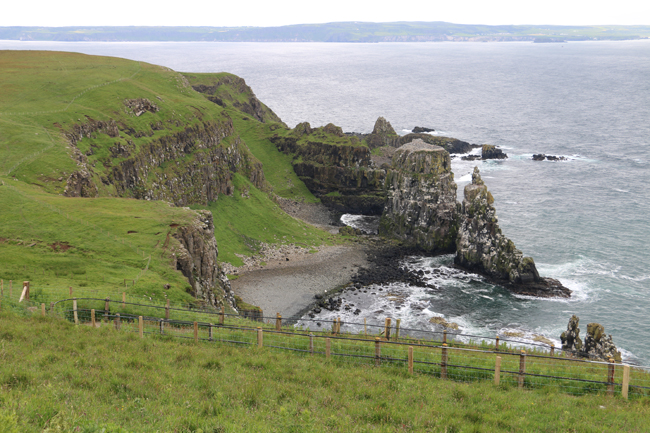
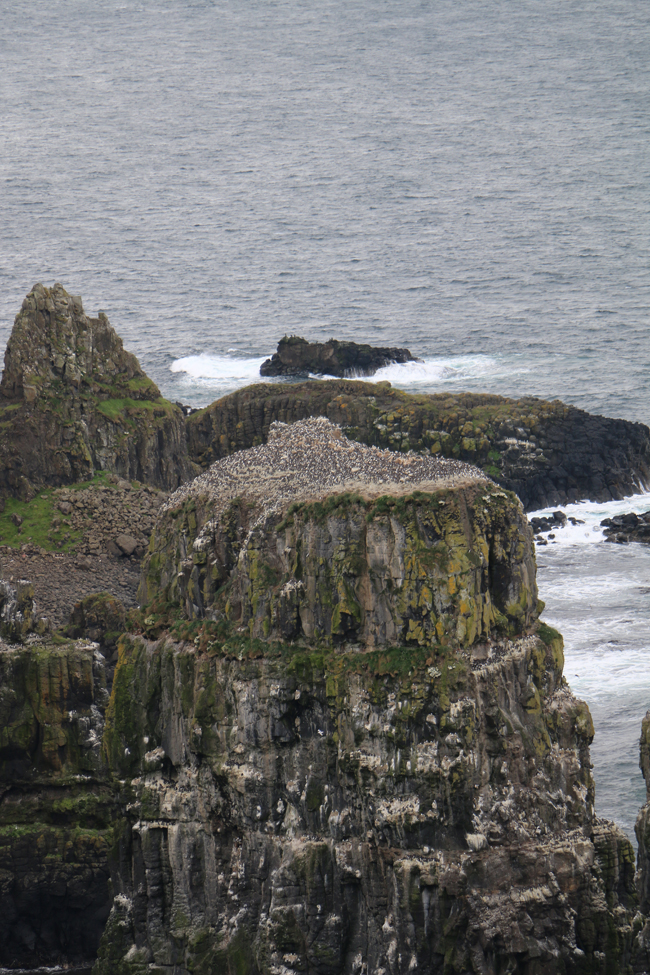
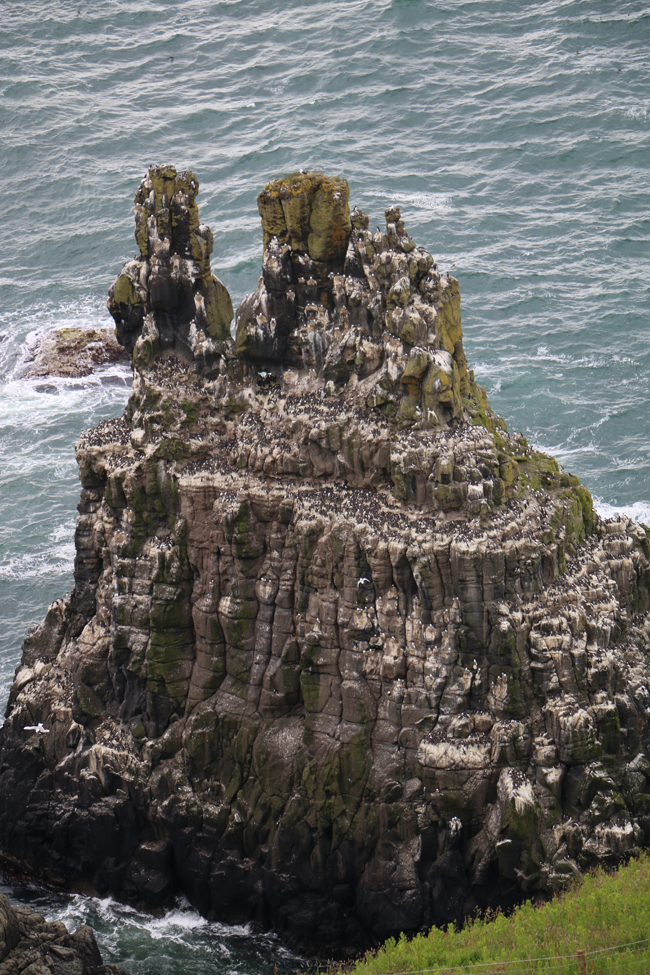
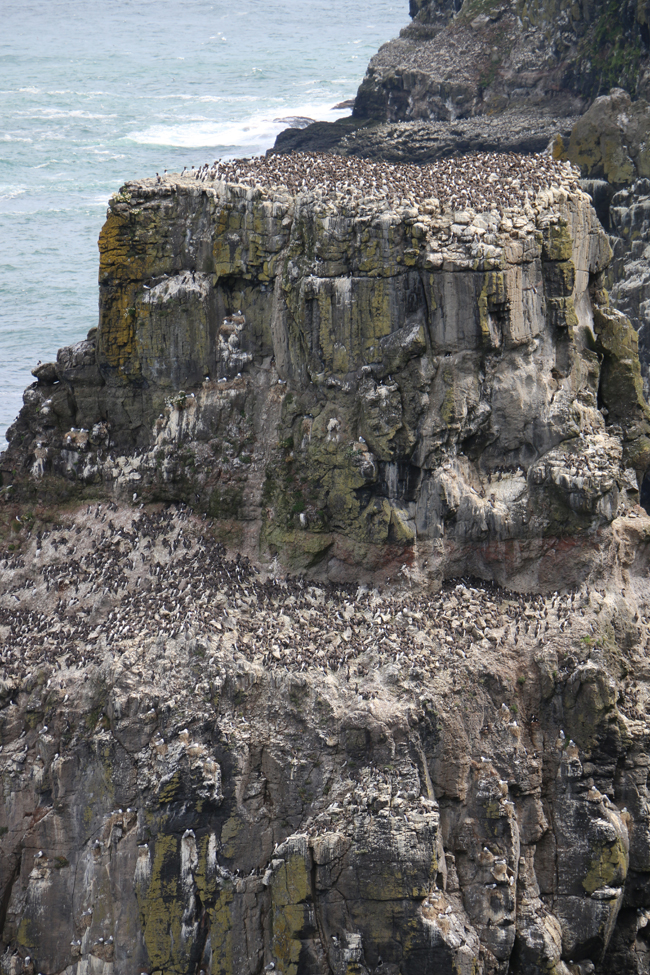
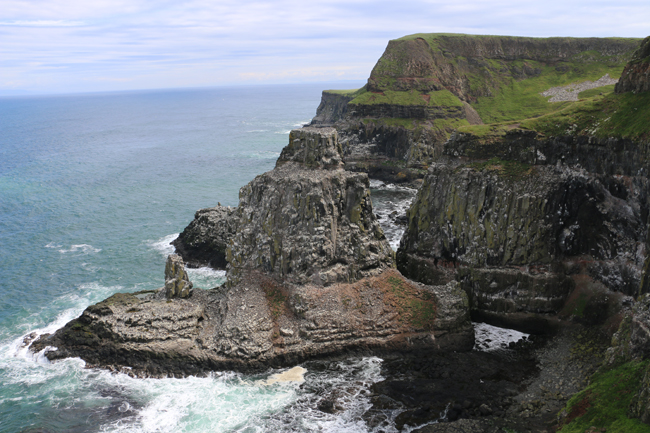
Okay, now that you’ve run your eyeballs over those photos, consider some GigaPans:
Gazing over the pastoral scene on the Roonivoolin Trail, you don’t really get a sense of the geology:
Link GigaPan by Callan Bentley
…But basically the island is made of Paleogene basalts slathered over Cretaceous “Chalk” (the Ulster White Limestone, technically), as the next two GigaPans show:
Link GigaPan by Callan Bentley
Link GigaPan by Callan Bentley
The basalt dominates the outcrops you’ll see walking around the island. See if you can find some laterite in this view:
Link GigaPan by Callan Bentley
The West Light bird sanctuary features some horrifically stinky seabird nesting colonies (puffins!!) atop sea stacks eroded into the basalt:
Link GigaPan by Callan Bentley
Link GigaPan by Callan Bentley
A weathered outcrop of basalt nearby the bird sanctuary visitor center:
Link GigaPan by Callan Bentley
Let’s head down to the shore next, and take a look at the beach. You might find some seals in this image:
Link GigaPan by Callan Bentley
The beach there hosts a nice variety of sediment. The contrast between the chalk and basalt cobbles is striking:
Link GigaPan by Callan Bentley
Link GigaPan by Callan Bentley
Here’s a Petri dish full of a slightly finer collection of sediment from the shores of Church Bay:
Link GIGAmacro by Robin Rohrback
And a finer, wind-sorted fraction of the sediment that accumulated higher up the berm:
Link GIGAmacro by Robin Rohrback
Here’s a cobble of the basalt, showing well-developed amygdules in its vesicles:
Link GIGAmacro by Robin Rohrback
Front and back of a cobble of the Ulster White Limestone, showing a cross-section through a belemnite:
Link GigaPan by Callan Bentley
The obverse really shows the radial arrangement of the calcite crystals in the belemnite’s rostrum:
Link GigaPan by Callan Bentley
Scanning electron micrograph (SEM) GigaPan of the Ulster White Limestone. You’ll find some coccoliths in there – the little plates surrounding the coccolithophore organism which is the source of chalk:
Link SEM GigaPan by Robin Rohrback
And finally, an SEM image of a foram from the fine sediment sample. Somewhere, you’ll find a diatom hiding in its interstices!
Link SEM GigaPan by Robin Rohrback


 Callan Bentley is Associate Professor of Geology at Piedmont Virginia Community College in Charlottesville, Virginia. He is a Fellow of the Geological Society of America. For his work on this blog, the National Association of Geoscience Teachers recognized him with the James Shea Award. He has also won the Outstanding Faculty Award from the State Council on Higher Education in Virginia, and the Biggs Award for Excellence in Geoscience Teaching from the Geoscience Education Division of the Geological Society of America. In previous years, Callan served as a contributing editor at EARTH magazine, President of the Geological Society of Washington and President the Geo2YC division of NAGT.
Callan Bentley is Associate Professor of Geology at Piedmont Virginia Community College in Charlottesville, Virginia. He is a Fellow of the Geological Society of America. For his work on this blog, the National Association of Geoscience Teachers recognized him with the James Shea Award. He has also won the Outstanding Faculty Award from the State Council on Higher Education in Virginia, and the Biggs Award for Excellence in Geoscience Teaching from the Geoscience Education Division of the Geological Society of America. In previous years, Callan served as a contributing editor at EARTH magazine, President of the Geological Society of Washington and President the Geo2YC division of NAGT.